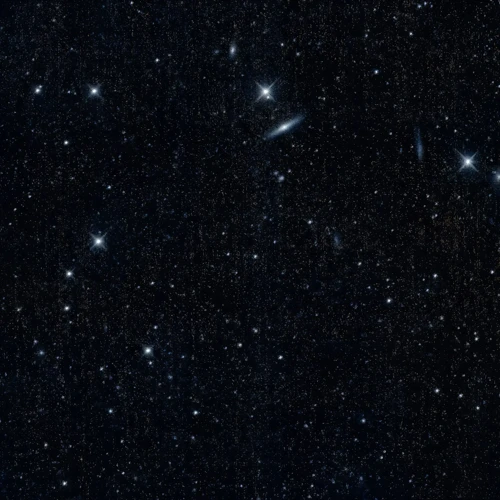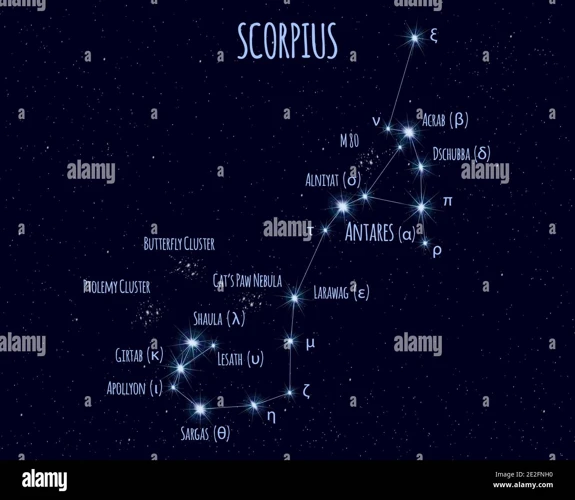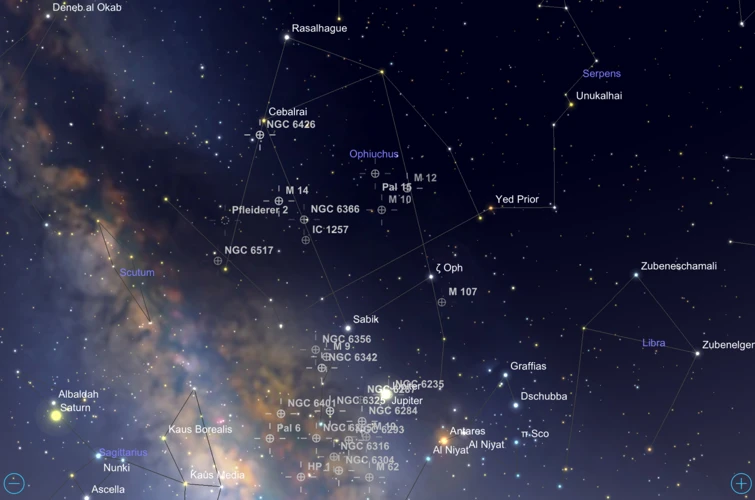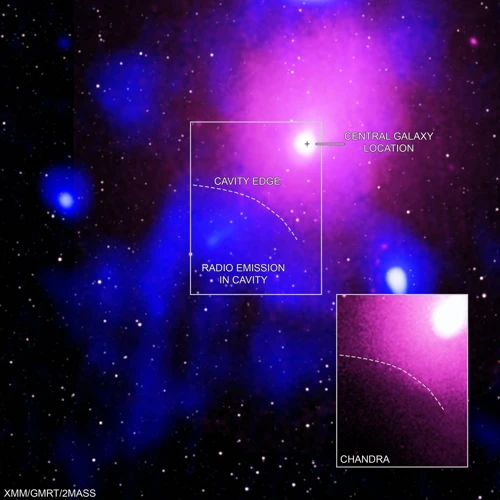The starry sky has always captivated the human imagination, serving as a celestial canvas for countless cultures to weave myths and stories. Among the indigenous peoples of Australia, the Southern Cross holds a particularly important place. Revered for its cultural significance, this constellation has guided the Aboriginal people for thousands of years. In this article, we delve into the role of the Southern Cross in Aboriginal astronomy, uncovering its astronomical features, navigation capabilities, and dreamtime stories. We also explore how indigenous knowledge of the skies goes beyond a single constellation, encompassing an entire system of constellations that are deeply connected to the land and culture. Join us as we embark on a journey to discover the rich heritage of Aboriginal skylore and the ongoing efforts to preserve this knowledge for future generations.
Contents
- The Southern Cross: A Guiding Star
- Aboriginal Skylore and Constellations
- Observing the Southern Cross Today
- The Future of Aboriginal Astronomy
- Conclusion
-
Frequently Asked Questions
- 1. How did the Aboriginal people use the Southern Cross for navigation?
- 2. What other astronomical features are associated with the Southern Cross?
- 3. Are there any specific Dreamtime stories associated with the Southern Cross?
- 4. How is the Southern Cross connected to Aboriginal culture and identity?
- 5. Can the Southern Cross be seen from anywhere in Australia?
- 6. Is the Southern Cross only important to Aboriginal astronomy?
- 7. How has modern technology impacted Aboriginal astronomy and the use of the Southern Cross?
- 8. Is there a specific time of the year when the Southern Cross is most visible?
- 9. How do Aboriginal communities pass down their knowledge of the Southern Cross?
- 10. Are there any modern efforts to preserve and promote Aboriginal astronomy?
- References
-
Frequently Asked Questions
- 1. How did Aboriginal people use the Southern Cross for navigation?
- 2. What are some other constellations important in Aboriginal skylore?
- 3. How have Aboriginal communities preserved their astronomical knowledge?
- 4. What are some modern practices for observing the Southern Cross?
- 5. Can anyone visit Aboriginal astronomical sites?
- 6. How is Aboriginal astronomy portrayed in popular culture?
- 7. What is the significance of the Southern Cross in Dreamtime stories?
- 8. How does the Southern Cross relate to Aboriginal connection to land and culture?
- 9. What role does the Southern Cross play in modern Aboriginal education?
- 10. How can collaborative research contribute to the future of Aboriginal astronomy?
- References
- Read More
The Southern Cross: A Guiding Star

The Southern Cross, also known as Crux, is a constellation that holds great cultural significance for the Aboriginal people of Australia. This prominent star formation has served as a guiding star for navigation and seasonal indicators for thousands of years. Its distinctive shape of four bright stars in a cross formation makes it easily recognizable in the night sky. The Southern Cross has played a crucial role in Aboriginal astronomy, helping navigate vast distances across the Australian continent. By observing the position of the Southern Cross, Aboriginal people could determine cardinal directions, track the changing seasons, and find important landmarks. This celestial compass allowed them to navigate their way through the vast and varied Australian landscape. The Southern Cross is not only an astronomical tool but also a symbol of cultural pride and identity for Aboriginal communities. According to Dreamtime stories, the Southern Cross represents important ancestral beings who shape the world and guide the people. Through these stories, the Aboriginal people pass down their knowledge and connection to the land from one generation to another. Today, the Southern Cross continues to be a symbol of resilience, unity, and cultural heritage for Aboriginal communities.
1. Cultural Significance
The cultural significance of the Southern Cross to the Aboriginal people is profound. This constellation is not only a practical tool for navigation but also holds deep spiritual and mythological meaning. It is considered a sacred symbol that connects the Aboriginal people to their ancestral past and their traditional lands. The Southern Cross features prominently in Dreamtime stories, which are ancient narratives passed down through generations. These stories explain the creation of the world, the origins of specific landscapes, and the behaviors and characteristics of animals and plants. The Southern Cross is often associated with important ancestral beings who are believed to have shaped the land and guided the people. These stories foster a sense of identity, belonging, and spiritual connection for Aboriginal communities. The Southern Cross is also a symbol of resilience and strength, representing the enduring culture and survival of the Aboriginal people despite the challenges they have faced. Its cultural significance is woven into various aspects of Aboriginal life, including art, songs, dances, and ceremonies. Through these cultural expressions, the importance of the Southern Cross is celebrated and shared with younger generations, ensuring the continued preservation of Aboriginal traditions and knowledge.
2. Astronomical Features
The Southern Cross, with its unique astronomical features, has fascinated both astronomers and Aboriginal people for centuries. The four bright stars that form the cross are named Alpha, Beta, Gamma, and Delta Crucis. Alpha Crucis, also known as Acrux, is the brightest star in the constellation and serves as a reference point for navigation. It is a multiple star system, consisting of two closely orbiting stars. Beta Crucis, or Mimosa, is the second brightest star and is also a multiple star system, with three stars orbiting each other. Gamma Crucis, or Gacrux, is the third brightest star and has an orange-red hue. Delta Crucis, or Intrometida, is the smallest of the four stars. Interestingly, the Southern Cross is not fixed in the sky and appears to rotate around the celestial South Pole due to Earth’s movement. This phenomenon, known as precession, means that over time, the Southern Cross changes its orientation, making it an ever-evolving feature of the southern skies. The astronomical features of the Southern Cross showcase the dynamic nature of the celestial world and further contribute to its cultural and navigational significance for the Aboriginal people.
The Southern Cross has served as a crucial navigational tool and a seasonal indicator for the Aboriginal people. As expert observers of the night sky, they used the position and movement of the Southern Cross to determine their direction and track the changing seasons. One of the key methods they employed was aligning the Southern Cross with the celestial pole, which is the point in the sky directly above the Earth’s axis. By doing so, they could establish cardinal directions, with the Southern Cross pointing towards the south. This was especially important for navigating across vast distances in the Australian landscape, where landmarks and signs were scarce. Additionally, the rotation of the Southern Cross throughout the year provided valuable insights into the changing seasons. During specific times, such as when the Cross appeared upright or inverted, the Aboriginal people could identify which plants were in bloom or which animals were migrating. This celestial understanding allowed them to effectively adapt their hunting, gathering, and agricultural practices to the natural rhythms of the land. The deep knowledge of the Southern Cross as a navigational and seasonal indicator showcases the profound connection that Aboriginal people had with the celestial world. It demonstrates their intimate understanding of the environment and their ability to harmonize with nature.
4. Dreamtime Stories
Dreamtime stories are an integral part of Aboriginal culture and hold deep meaning when it comes to understanding the role of the Southern Cross in Aboriginal astronomy. These stories, passed down through oral tradition, explain the origins of the universe, the land, and the stars. In many Dreamtime stories, the Southern Cross is often associated with important ancestral beings and acts as a guide for navigation and spiritual significance. One example is the story of Djulpan, an Aboriginal hero who is said to have been transformed into the Southern Cross constellation. According to the legend, Djulpan was a skilled hunter who traversed the land, learning from the land and its creatures. When he died, he was transformed into the four bright stars that make up the Southern Cross. This story not only reflects the connection between the sky and the land but also emphasizes the importance of learning from the natural world. Another Dreamtime story, the story of the Emu in the Sky, depicts the dark spaces between the stars of the Milky Way as the shape of an emu. The head of the emu is formed by the Coalsack Nebula, a dark patch of dust in the Milky Way. This story holds cultural significance as it represents the cycle of life and the connection between land, sky, and the spiritual realm. These Dreamtime stories not only impart astronomical knowledge but also serve as a means of passing down cultural values, traditions, and the deep spiritual connection that the Aboriginal people have with the cosmos. They provide a rich tapestry of Aboriginal culture, embedding the Southern Cross as a constant reminder of their ancestral heritage and the wisdom embedded in the night sky.
Aboriginal Skylore and Constellations

Aboriginal skylore goes beyond the Southern Cross, encompassing a vast system of constellations deeply intertwined with the land and culture. These constellations hold great significance in Aboriginal mythology and provide a unique perspective on the cosmos. One such constellation is the Emu in the Sky, known as Djulpan in the Yolngu language of the Indigenous people of northern Australia. This constellation is represented by dark patches of the Milky Way, resembling the shape of an emu. According to Aboriginal Dreamtime stories, the Emu in the Sky is associated with creation and fertility. Another constellation of importance is the Seven Sisters, also known as the Pleiades, which feature prominently in Indigenous astronomy across different regions. According to various Aboriginal groups, the Seven Sisters represent a group of women who are being pursued by a man represented by the Orion constellation. This chase is said to be reflected in the annual movement of the Pleiades across the night sky. These constellations and their accompanying stories serve as a testament to the deep connection between Aboriginal people, the celestial realm, and the natural world around them. They provide a rich tapestry of Indigenous knowledge and culture that is passed down from generation to generation, ensuring the preservation of this ancient wisdom.
1. Other Prominent Constellations
Other prominent constellations in Aboriginal astronomy complement the significance of the Southern Cross in the night sky. One such constellation is the Emu, which is represented by dark patches of the Milky Way. The dark spaces within the Milky Way create the distinct shape of an emu, a significant animal in Aboriginal culture. The Emu in the Sky holds cultural and spiritual significance, symbolizing fertility, hunting seasons, and the cycle of life. Another important constellation is the Seven Sisters, also known as the Pleiades. This cluster of stars features prominently in many Aboriginal creation stories and holds a special place in women’s dreaming. The stories of the Seven Sisters revolve around themes of love, protection, and responsibility. By observing the movements and positions of these constellations, Aboriginal people gained a deep understanding of the celestial cycles, agricultural seasons, and significant cultural events. These constellations are not just map points in the sky but intricately woven into the fabric of Aboriginal culture, connecting generations and preserving indigenous knowledge. Understanding these constellations allows us to gain insight into the rich tapestry of Aboriginal skylore and the way indigenous Australians have navigated their world for thousands of years.
2. Connection to Land and Culture
The connection between the Southern Cross and Aboriginal culture extends beyond its practical astronomical use. For Aboriginal communities, the Southern Cross is deeply intertwined with their land and cultural identity. Each star in the constellation has its own unique significance and is associated with different aspects of life, such as water, fire, and the human spirit. The positioning and movement of the Southern Cross in the sky also have spiritual and ceremonial implications. Aboriginal people believe that the stars are not merely celestial bodies but are connected to the very fabric of the land they inhabit. By observing the patterns of the Southern Cross and other constellations, Aboriginal communities can discern critical information about the natural world, such as the arrival of specific seasons, the migration of animals, and the availability of resources. This intimate knowledge of the skies fosters a deep connection to the land and a profound sense of stewardship for the environment. The Southern Cross serves as a reminder of the enduring relationship between the Aboriginal people and their ancestral lands, emphasizing the inseparable link between culture, spirituality, and the natural world. Through the transmission of oral traditions and the continued practice of age-old ceremonies, this connection to the Southern Cross and the land it represents remains a vital part of Aboriginal culture and identity./exploring-divine-deities-mayan-mythology/
3. Indigenous Knowledge Preservation
Preserving indigenous knowledge, including Aboriginal astronomy, is of paramount importance to ensure the cultural heritage and wisdom of the Aboriginal people are safeguarded for future generations. The preservation of this knowledge is crucial because it holds not only astronomical significance but also a deep connection to the land and culture. Efforts to preserve indigenous knowledge involve a combination of oral traditions, storytelling, and modern methods of documentation. Aboriginal elders and knowledge holders play a fundamental role in passing on this knowledge through intergenerational teachings, ensuring that it continues to be shared and practiced. Additionally, collaborations between Aboriginal communities, researchers, and institutions are vital for the preservation of indigenous knowledge. These partnerships foster mutual respect and understanding, allowing for the documentation and study of Aboriginal astronomy in a culturally sensitive and responsible manner. By embracing innovative approaches and technology, such as digital archives and interactive platforms, indigenous knowledge can be shared with a broader audience while respecting cultural protocols. This not only strengthens the preservation of Aboriginal astronomy but also promotes awareness and appreciation of the rich cultural heritage encoded within the night skies. As we work towards the preservation of indigenous knowledge, it is essential to recognize its value and contribute to its protection for the benefit of all humanity.
Observing the Southern Cross Today

Observing the Southern Cross today is a fascinating experience that allows us to connect with the knowledge and traditions of the Aboriginal people. Modern practices of observing the Southern Cross involve using advanced technology and astronomical tools to study and appreciate this important constellation. Astronomers and enthusiasts make use of telescopes, binoculars, and astrophotography to capture detailed images of the Southern Cross and its surrounding celestial objects. By studying the Southern Cross, researchers can gain valuable insights into the movement and evolution of stars, as well as the structure of our galaxy. In addition to scientific observations, there is also a growing interest in astronomical tourism, where individuals can visit observatories or participate in stargazing events to admire the beauty of the night sky, including the Southern Cross. These experiences provide a unique opportunity to learn about Aboriginal astronomy and immerse oneself in the rich cultural heritage associated with the Southern Cross. It is through such initiatives that the importance of indigenous knowledge and its integration into modern scientific practices is recognized. By educating the next generation about the significance of the Southern Cross and Aboriginal astronomy, we can ensure the preservation and continued appreciation of this ancient wisdom.
1. Modern Practices
In modern times, the practice of Aboriginal astronomy has evolved to incorporate new technologies and collaborative research. One important aspect of modern practices is the use of sophisticated telescopes and astronomical equipment. These tools enable Aboriginal astronomers and researchers to study celestial objects in greater detail and gain deeper insights into the universe. Advancements in digital imaging and data analysis have allowed for more accurate measurements and recordings of astronomical phenomena. Aboriginal astronomy also benefits from collaborations between indigenous and non-indigenous scientists, fostering cultural exchange and the sharing of knowledge. This collaborative approach promotes a holistic understanding of the skies and strengthens the preservation of Aboriginal astronomical traditions. Additionally, efforts are underway to integrate Aboriginal astronomy into mainstream education and scientific curricula. By teaching the next generation about the rich cultural history and scientific contributions of Aboriginal astronomy, there is an opportunity to foster respect, appreciation, and a deeper connection with the land and the stars. Through these modern practices, Aboriginal astronomy continues to thrive and contribute to our understanding of the universe.
2. Astronomical Tourism
Astronomical tourism offers a unique opportunity for visitors to experience the wonders of the night sky, including the captivating beauty of the Southern Cross. In many regions of Australia, especially those with clear and unpolluted skies, tourists flock to witness the brilliance of stars and constellations that have long been observed by Aboriginal peoples. Guided tours and stargazing events allow visitors to learn about the significance of the Southern Cross in Aboriginal astronomy and its role in navigation and storytelling. These experiences often involve knowledgeable guides who share traditional stories, explain astronomical features, and provide insights into indigenous perspectives on the cosmos. Some tour operators collaborate with local Aboriginal communities to ensure authenticity and respect for cultural practices. By participating in astronomical tourism, visitors can gain a deeper appreciation for the rich cultural heritage associated with the Southern Cross and Aboriginal skylore. It also presents an opportunity for cross-cultural exchange and understanding. This form of tourism not only supports the local economy but also contributes to the preservation of indigenous knowledge and traditions. Through such experiences, visitors can develop a greater sense of wonder and connection to the stars, inspiring them to protect these precious celestial wonders for generations to come.
3. Educating the Next Generation
Educating the next generation about Aboriginal astronomy and the significance of the Southern Cross is crucial for preserving this rich cultural heritage. Various initiatives and programs have been developed to ensure the transmission of indigenous knowledge to younger Aboriginal individuals and the wider community. Schools and educational institutions have incorporated lessons and activities that explore the constellations, dreamtime stories, and the traditional practices of Aboriginal astronomy. These educational programs aim to instill a sense of pride and appreciation for indigenous culture while fostering a deeper understanding of the significance of the Southern Cross. Additionally, community-led workshops and events are organized to engage youth in hands-on experiences, such as stargazing tours and storytelling sessions. These interactive activities provide a direct connection to the ancient knowledge passed down through generations, fostering a sense of belonging and identity. With the increasing recognition of Aboriginal astronomy, there is also a growing demand for educational resources, including books, documentaries, and online platforms that share the stories and practices surrounding the Southern Cross and the broader constellation system. Through these efforts, the next generation can continue to learn, appreciate, and pass on the wisdom and significance of the Southern Cross to future generations, ensuring the preservation of this invaluable cultural knowledge.
The Future of Aboriginal Astronomy

The future of Aboriginal astronomy is filled with exciting possibilities and opportunities for collaboration and cultural preservation. One significant aspect is the growing interest in collaborative research between Aboriginal communities and scientific institutions. This collaboration aims to combine traditional indigenous knowledge with modern scientific methods to gain a deeper understanding of the cosmos. By working together, both parties can benefit from each other’s expertise, enhancing our knowledge of the universe while honoring the cultural practices and wisdom of the Aboriginal people. Aboriginal astronomy is gradually gaining recognition in popular culture, leading to increased awareness and appreciation for indigenous astronomical practices. This recognition helps to preserve and promote the rich heritage of Aboriginal astronomy, ensuring that it continues to thrive for generations to come. Through initiatives such as educational programs and outreach activities, efforts are being made to educate the younger generation about Aboriginal astronomy and its cultural significance. By passing down this knowledge, Aboriginal communities are ensuring the preservation and continuation of their unique astronomical traditions. The future of Aboriginal astronomy is bright, promising ongoing research, cultural revitalization, and a deeper appreciation for the ancient wisdom embedded in the stars.
1. Collaborative Research
Collaborative research plays a pivotal role in advancing our understanding of Aboriginal astronomy and preserving indigenous knowledge. Researchers, scientists, and Aboriginal communities are coming together to undertake studies and projects aimed at uncovering the depth of Aboriginal skylore and its significance. Collaborative research allows for the integration of traditional knowledge with scientific methods, fostering a holistic approach to studying the stars. By combining Aboriginal oral history, art, and contemporary scientific techniques, researchers can gain a deeper understanding of the cultural and astronomical significance of the Southern Cross and other constellations. This collaborative research not only benefits the scientific community but also strengthens the bonds between Aboriginal communities and researchers, promoting cultural exchange and mutual respect. The findings from these collaborative endeavors provide invaluable insights into the rich heritage of Aboriginal astronomy, ensuring that this ancient knowledge is preserved and shared for generations to come. It is through collaborative research that we can truly grasp the significance of the Southern Cross in Aboriginal astronomy and the profound connection it holds to indigenous land and culture.
2. Aboriginal Astronomy in Popular Culture
Aboriginal astronomy has started to gain recognition and representation in popular culture, helping to preserve and share this rich knowledge with a wider audience. Films, documentaries, and literature have begun to explore the significance of Aboriginal astronomy, showcasing the deep connection between the sky and indigenous culture. This representation not only educates the general public about the importance of Aboriginal astronomy but also serves as a source of empowerment and pride for Aboriginal communities. Traditional Aboriginal star stories are being shared through various mediums, captivating audiences and fostering a greater appreciation for indigenous knowledge. Additionally, the integration of Aboriginal astronomy into popular culture provides an opportunity for cross-cultural dialogue and understanding, promoting diversity and inclusivity. By recognizing the significance of Aboriginal astronomy, individuals can develop a greater respect for indigenous cultures and learn from their profound understanding of the celestial realm. This newfound recognition in popular culture contributes to the preservation and revitalization of Aboriginal astronomy, ensuring that this ancient wisdom continues to be celebrated and passed on for generations to come.
Conclusion

In conclusion, the Southern Cross stands as a testament to the deep connection between the Aboriginal people of Australia and the celestial realm. This constellation, with its cultural significance and navigational value, has been an integral part of Aboriginal astronomy for generations. While the role of the Southern Cross as a guiding star has evolved over time with technological advancements, its importance in preserving indigenous knowledge and cultural identity remains steadfast. The Dreamtime stories associated with the Southern Cross not only impart wisdom but also serve as a reminder of the rich heritage of Aboriginal skylore. As efforts continue to preserve and promote indigenous knowledge, including the celestial knowledge encompassed by the Southern Cross, collaborations between researchers and communities serve as a stepping stone towards a brighter future for Aboriginal astronomy. By acknowledging and honoring the contribution of Aboriginal astronomy, we can gain a deeper understanding of the interconnectedness of cultures across the globe and the significance of celestial bodies in shaping human history and identity.
Frequently Asked Questions

The Aboriginal people used the Southern Cross as a navigational tool by observing its position and orientation in the night sky. By determining the direction in which the long arm of the cross pointed, they were able to find their way and navigate across the vast Australian landscape.
2. What other astronomical features are associated with the Southern Cross?
In addition to its distinctive cross formation, the Southern Cross is also part of a larger constellation known as Crux. Crux consists of four prominent stars: Alpha, Beta, Gamma, and Delta Crucis. The stars not only served as navigational markers but also provided insights into the changing seasons and weather patterns.
3. Are there any specific Dreamtime stories associated with the Southern Cross?
Yes, there are several Dreamtime stories that relate to the Southern Cross. One story tells of how the stars in the Southern Cross represent ancestral beings who played a role in the creation of the world and continue to guide and watch over the Aboriginal people.
4. How is the Southern Cross connected to Aboriginal culture and identity?
The Southern Cross holds immense cultural significance for Aboriginal people. It represents their deep connection to the land, history, and ancestral heritage. It is seen as a symbol of unity, resilience, and the continuation of traditional knowledge from one generation to the next.
5. Can the Southern Cross be seen from anywhere in Australia?
Yes, the Southern Cross is visible from all regions of Australia. However, its visibility may vary depending on the time of the year and specific location. In some areas, it may be more prominent during certain seasons or times of the night.
6. Is the Southern Cross only important to Aboriginal astronomy?
No, while the Southern Cross holds great significance in Aboriginal astronomy, it is also recognized and studied by astronomers worldwide. Its visibility in the Southern Hemisphere makes it a prominent feature of the night sky and a popular target for observation and study.
7. How has modern technology impacted Aboriginal astronomy and the use of the Southern Cross?
Modern technology, such as GPS navigation and digital databases, has provided additional tools and resources for navigation and astronomy. However, many Aboriginal communities continue to value and preserve their traditional knowledge of using the Southern Cross as a guide, combining it with the benefits of modern technology.
8. Is there a specific time of the year when the Southern Cross is most visible?
The Southern Cross is visible year-round in Australia. However, its visibility may be influenced by seasonal changes and atmospheric conditions. It is generally easier to spot during the southern hemisphere’s winter months when the sky is clearer and darker.
9. How do Aboriginal communities pass down their knowledge of the Southern Cross?
Aboriginal communities pass down their knowledge of the Southern Cross through oral storytelling, art, and cultural practices. Elders and knowledge holders play a crucial role in teaching younger generations about the cultural significance, navigation techniques, and Dreamtime stories associated with the Southern Cross.
10. Are there any modern efforts to preserve and promote Aboriginal astronomy?
Yes, there are ongoing efforts to preserve and promote Aboriginal astronomy. Collaborative research projects between Aboriginal communities and scientists aim to document and validate traditional knowledge. Additionally, educational programs and initiatives are being developed to raise awareness and appreciation for Aboriginal astronomy among the wider public.
References
Frequently Asked Questions

Aboriginal people used the Southern Cross as a navigational tool, utilizing its specific position in the sky to determine direction, particularly when embarking on long journeys across the land. The angle made by the upright cross relative to the horizon at night helped them establish north, south, east, and west.
2. What are some other constellations important in Aboriginal skylore?
Alongside the Southern Cross, Aboriginal skylore is rich in other prominent constellations. Some of these include the Emu in the Sky, which represents an important hunting animal, and the Seven Sisters, a cluster of stars associated with a popular Dreamtime story.
3. How have Aboriginal communities preserved their astronomical knowledge?
Aboriginal communities have preserved their astronomical knowledge through oral traditions passed down over countless generations. Elders and knowledgeable individuals within the community have played a pivotal role in ensuring the continuity of this valuable knowledge through teaching and storytelling.
4. What are some modern practices for observing the Southern Cross?
Modern practices for observing the Southern Cross include using telescopes and binoculars to explore its intricate details. Additionally, there are various smartphone applications available that can help identify and locate the Southern Cross in the night sky.
5. Can anyone visit Aboriginal astronomical sites?
Some Aboriginal astronomical sites are open to the public, while others may require permission from the local community. It is always important to approach these sites with respect, following any cultural protocols and guidelines for visitation.
6. How is Aboriginal astronomy portrayed in popular culture?
Aboriginal astronomy has gained recognition in popular culture through various forms of media. Films, documentaries, books, and artwork have helped raise awareness and appreciation for the rich astronomical heritage of Aboriginal people.
7. What is the significance of the Southern Cross in Dreamtime stories?
The Southern Cross holds significant roles in many Dreamtime stories. In some stories, it represents a group of young men who were transformed into stars as a way of honoring their bravery and sacrifice.
8. How does the Southern Cross relate to Aboriginal connection to land and culture?
The Southern Cross is deeply intertwined with the Aboriginal peoples’ connection to land and culture. Its position in the sky and its presence in Dreamtime stories serve as a reminder of their ancestral ties to the land and the importance of preserving their cultural heritage.
9. What role does the Southern Cross play in modern Aboriginal education?
The Southern Cross plays a crucial role in modern Aboriginal education, as it helps connect younger generations to their cultural identity and encourages them to explore and appreciate traditional knowledge. Schools and community organizations often incorporate Aboriginal astronomy into their curriculum and activities.
10. How can collaborative research contribute to the future of Aboriginal astronomy?
Collaborative research between Aboriginal communities and scientists can help further our understanding of Aboriginal astronomy. This research not only contributes to scientific knowledge but also ensures that Indigenous perspectives and knowledge systems are respected and included in the exploration of the cosmos.







